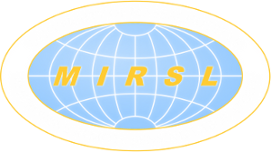Atmosphere

Active remote sensing systems are indispensible for studying the atmosphere. Examples include meteorological radars operating at microwave frequencies, wind profilers operating at VHF and UHF frequencies, millimeter-wave cloud radars, and IR and optical lidars for aerosol studies. Passive microwave systems (radiometers) also measure properties of the atmosphere such as the water vapor and cloud liquid water content..
MIRSL has developed several novel atmospheric remote sensing systems. These mobile systems participate in field experiments to better understand the dynamics of the lower atmosphere, and in particular, the atmospheric boundary layer. Here, the interaction of the atmosphere with the Earth surface gives rise to turbulence which is a significant means of transporting heat and momentum. Many of the processes that occur in the atmospheric boundary layer remain poorly understood, owing to their nonlinearity and unpredictable nature. Among the applications studied with MIRSL systems are severe storms and tornadoes, smoke plume transport from wildfires or from prescribed burning, and atmospheric boundary layer winds and turbulence.

Pictured at left is an S-band, frequency-modulated, continuous-wave atmospheric profiling radar. It employs separate antennas for transmitting and receiving. A lidar ceilometer is also contained within the white housing next to the antennas.

At right is a volume-imaging UHF wind profiler. The array of flat panel antennas is used to image within a volume illuminated by the large horn antenna (at left) via a process known as "digital beamforming." A Doppler sodar (acoustic radar) is shown next to the horn antenna.
